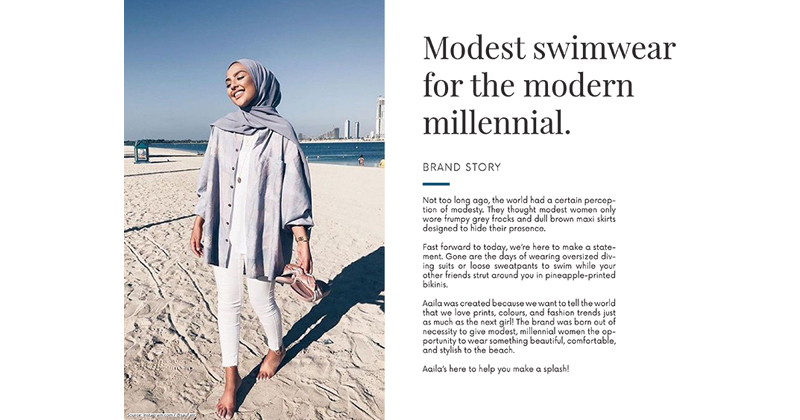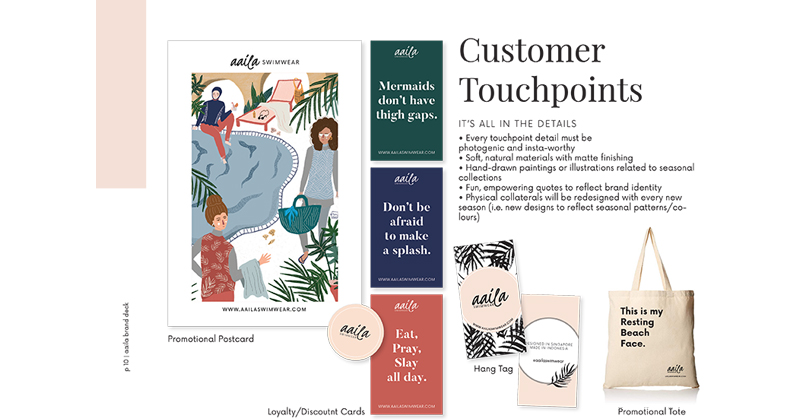What’s branding
Think of the times when you stand in the supermarket aisles trying to decide which products to buy. Do you choose brands you know and trust?
Branding, or the act of shaping a brand, brings out the personality of your business1, giving it a face and a voice. It affects how people relate to your products and tips them over to your customer camp. Besides helping your business grow over time, a successful brand can become financially valuable. One famous example is Kay Lee roast meat joint that was sold for S$4 million in 20142.
Building a successful brand certainly takes time but here are a few tips to get you started.
What’s your business about?
Even if you are clear of what you want to sell, take a moment to dig deeper into the value of your business: What do you bring to your customers? What do you want your business to be remembered for?
While Ikea’s life-sized showrooms inspire customers to “create better everyday life”3, local furnishing company FortyTwo offers flexibility, and operates purely through e-commerce where customers can shop without the limit of space and time4. Knowing which path your business takes is the first step to making your branding tick.
Next, think of why potential customers will want to buy from you instead of the shop next door. What is your edge over your competitor? Drinking local kopi-o at Ya Kun’s no frills outlets may not be as hip as sipping latte at Starbucks. But many Singaporeans and tourists have come to appreciate its breakfast staples and drinks in traditional cups and saucers. On the other hand, Starbucks’ customers know they can walk into any outlet worldwide and order the same cuppa in a familiar ambience.
Your business needs to convey a powerful story to convince your target audience why they need your products or services and what inspired you to create them in the first place. The clearer you are about what your business stands for (mission) and where it is heading (vision), the better you can communicate them through branding.
Who do you want to sell to?
Next, narrow down your target customers. It helps you find the right voice to communicate with them.
If you plan to create and sell shoes, think of which market segment to build your niche in. Do you plan to sell to women or men, young or old? Are your shoes for formal or casual wear?
Customers buying from Charles and Keith, Bata or Crocs are likely to have different profiles, needs and wants. Trying to catch them all is a stretch goal but may be unrealistic. The last thing you want to do is spend hours creating a brand that is too generic to resonate with any group.
Before you start branding, research on the people most likely to buy your products or services. Try sieving through demographic data such as age, income, gender to help you create a typical customer profile, or a “user persona”. Consider their purchasing power and lifestyle too.
Alternatively, check out your competitors, including online retailers to see what they offer and where the gaps are. Online comments left by their customers offer a glimpse into their pain points and may be hints to which segments are underserved.
The more you know about your target audience – who they are, what they value, what type of lingo they use – the easier it will be to “talk to them” and convert them into your customers5.
Creating your brand deck
Now that you have clarified what your business is about and who you intend to sell to, start thinking of the elements of your branding6. These include:
- Voice – Do you want your business to sound professional, stylish or sassy? Decide what works for your target audience and how it ties in with your business values. This has a bearing on how you choose other design elements for your brand.
- Colour – Colours evoke emotions and can get your message across subtly. Think of TWG’s black and gold hues for sophistication and luxury, or M1’s choice of orange for dynamism.
- Font – Likewise, the fonts on your company’s website and stationery speak volumes to the audience. Whether you choose traditional or whimsical ones, be consistent.
- Logo – Now that you have pinned down the voice, colour and fonts representing your company, go ahead and design your logo, which is the most visible element of what your brand stands for.
- Business card – Long after that first handshake, business cards convey what your business is about to your associates and customers. Make that first impression last.
- Packaging – Use the same look and feel for your packaging, which should align with your business values, such as eco-friendliness and innovation.
- Website and social media – Your website is where many customers will get to know all about your business, while social media platforms are where you can converse with them. Make your brand identity stand out clearly.
Most importantly, stitch up all these elements and pin them down in your company’s very own brand style guide. It helps you clarify your branding practices and serves as a handy document for onboarding your vendors or new employees.
Stick to the plan, be consistent
Once you have a branding plan, your next task is to ensure it remains consistent across your marketing channels and platforms. A consistent identity not only makes your product more memorable, it makes your brand more authoritative and credible in the market. A good product generates customers, but a strong brand generates advocates. Just think of Apple and its products.
Case Study: Aaila
Creating a brand for modest swimwear
Aaila is a Singapore start-up that saw the value of branding as part of business development.
Michelle Yeo, a Singaporean Chinese who spent 18 of her growing up years in Jakarta, spotted a gap in the market for modest swimwear that matches the tastes of young, millennial Muslim ladies. She co-founded Aaila Swimwear to serve that niche market but found herself in need of help to understand and reach out to her target audience.
Michelle approached SME Centre@SMCCI and was introduced to Nadhirah, a business advisor who guided her and her team to come up with a focused brand deck for the company.
“Right from the first meeting, Nadhirah had a strong grasp of what I wanted the brand to become. She gave me a list of things to think through, for example the brand vision, mission, values, message and tone of voice, to define clearly what I want to achieve and what I want my customers to know,” said Michelle.
Nadhirah also suggested for the team to share its brand story – how they started and how they created the line – with its audience to help buyers relate to the brand. Through an assessment, they discovered that Aaila’s personality was carefree and aspirational and proposed a “jester cum companion” brand personality.

These discussions guided Michelle and her team to create a clear and focused brand deck as the first step to successful branding. The brand has also gone on to identify modern, middle-income ladies in the 21 to 35 age group as their target audience.

You too can grow your business with a focused branding plan.
Make an appointment with our business advisors at any of the SME Centres to give your branding a boost.

